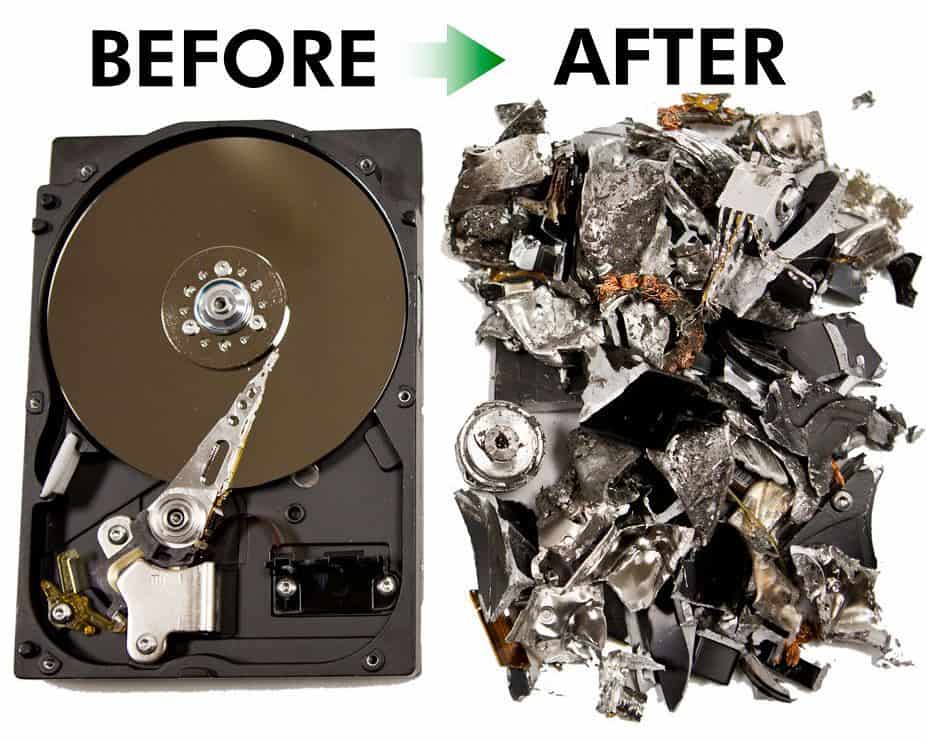How to Incorporate Data Destruction Techniques right into Your Cyber Security Approach
How to Incorporate Data Destruction Techniques right into Your Cyber Security Approach
Blog Article
Discovering the Importance of Information Devastation in the Context of Computer System Protection Providers and Protecting Confidential Information
In an era where data violations are significantly typical, the relevance of efficient information devastation can not be overemphasized. What methods can companies execute to enhance their data devastation protocols?
Comprehending Information Destruction
Information devastation is a critical component of computer system security that includes the long-term removal of information from storage space gadgets to prevent unauthorized access and prospective data violations. In an increasingly digital landscape, companies deal with enhanced dangers connected with delicate information being incorrectly accessed or made use of. Efficient data damage safeguards against these hazards, making sure that private dataâEUR" such as consumer info, copyright, and economic recordsâEUR" can not be recovered after disposal.
Understanding the value of data devastation prolongs beyond mere compliance with regulative and lawful structures; it is vital for keeping organizational honesty and trust. When data is incorrectly handled or inadequately ruined, the effects can be serious, including financial loss, reputational damages, and lawful obligations.

Methods of Information Eradication

One prevalent approach is data wiping, which includes overwriting existing data with random patterns several times. This method makes the initial information irretrievable, making it a preferred choice for organizations seeking to secure personal information.
One more technique is degaussing, which makes use of an effective electromagnetic field to disrupt the magnetic domains on storage gadgets, properly getting rid of the information. This approach is specifically effective for magnetic media however is not relevant to solid-state drives.
Physical damage is one more durable method, involving the shredding or squashing of storage space tools. This technique assurances that information recovery is practically difficult, making it excellent for very sensitive info.
Finally, security can serve as a complementary method to data eradication. By securing information prior to removal, companies can include an additional layer of safety and security, ensuring that even if residues are recuperated, they remain hard to reach without the decryption secret. Each method needs to be selected based upon the degree of information level of sensitivity and the particular security needs of the organization.
Legal Conformity and Data Security
Organizations have to browse a complex landscape of lawful demands related to information safety and security, especially after implementing approaches of information removal. Different guidelines, such as the General Data Protection Regulation (GDPR) and the Medical Insurance Portability and Liability Act (HIPAA), enforce rigorous standards on just how companies must handle and get rid of of delicate data. Failure to abide by these regulations can lead to substantial lawful effects, including significant penalties and reputational damage.
Data destruction processes need to be thoroughly documented to show conformity with suitable regulations and standards. This documentation not only works as evidence of adherence to lawful responsibilities yet also illustrates a commitment to securing sensitive info. Organizations needs to additionally develop clear plans concerning data retention and damage timelines, ensuring that data is not held longer than necessary.

In addition, regular audits and evaluations of data devastation techniques are necessary to preserve conformity and adapt to developing legal frameworks (data destruction). By proactively resolving legal needs, companies can minimize dangers connected with information violations and show their commitment to information safety. Inevitably, prioritizing legal compliance in data destruction check out here procedures is not just a governing obligation, but a basic aspect of a durable data safety method
Influence On Organization Credibility
The reputation of an organization can be substantially affected by its strategy to information devastation and management. In today's electronic landscape, where data violations can happen anytime, the failure to effectively deal with delicate information can cause severe effects. Organizations that inadequately manage information devastation danger revealing personal client details, which not only breaches privacy legislations however additionally wears down depend on among clients and stakeholders.
A tarnished online reputation can result in decreased consumer loyalty, as clients end up being reluctant to involve with a service that has actually demonstrated neglect in protecting their data. Adverse attention bordering a data breach can have a long-term effect, as potential clients may be hindered by the regarded lack of safety. This can bring about a straight decline in earnings and market share.
Furthermore, companies that prioritize data destruction as component of their protection strategy can enhance their track record by showcasing their dedication to securing delicate info. By embracing strict data administration techniques, companies can not only reduce risks however additionally place themselves as credible entities in their corresponding sectors, thus strengthening their total brand picture.

Finest Practices for Secure Disposal
Applying best methods for safe and secure disposal of information is important for mitigating risks related to data violations and making sure compliance with personal privacy policies. Organizations should take on a comprehensive information disposal policy that lays out procedures for both digital and physical data devastation.
For physical data storage space gadgets, such as disk drives, shredding or degaussing is recommended to stop information recuperation. Furthermore, companies should keep a chain of custody paperwork throughout the disposal process, guaranteeing responsibility and traceability of disposed items.
For digital information, using software application that follows sector standards for data cleaning is crucial. This software application ought to overwrite existing data several times, making recuperation useful source practically impossible. It is likewise essential to confirm the effectiveness of the data damage procedure through audits or third-party evaluations.
Educating staff members on secure disposal methods adds one more layer of safety and security, as human error can commonly cause information exposure. Frequently reviewing and updating disposal policies makes sure placement with advancing regulations and technical improvements. By carrying out these ideal techniques, companies can significantly decrease the threat of unapproved information accessibility and boost their total information protection strategy.
Verdict
To conclude, information devastation is a basic facet of computer system security services that guarantees the security of secret information from unauthorized access. Implementing reliable approaches of data obliteration, sticking to legal compliance, and identifying the effect on service online reputation are necessary parts of a thorough information safety and security strategy. By adopting finest techniques for safe and secure disposal, companies can promote trust with clients and guard delicate data, ultimately adding to a more safe digital landscape.
In an era where data breaches are increasingly typical, the relevance of reliable data damage can not be overstated.Information damage is an important component of computer safety that includes the irreversible elimination of data from storage gadgets to avoid unapproved accessibility and possible information violations. Organizations ought to additionally develop clear plans regarding data retention and damage timelines, making certain that data is not held longer than needed.
By proactively resolving lawful requirements, companies can mitigate dangers linked with information breaches and demonstrate their dedication to data protection (data destruction). Eventually, prioritizing lawful compliance in data devastation processes is not simply a governing commitment, but an see here essential aspect of a robust information safety and security approach
Report this page